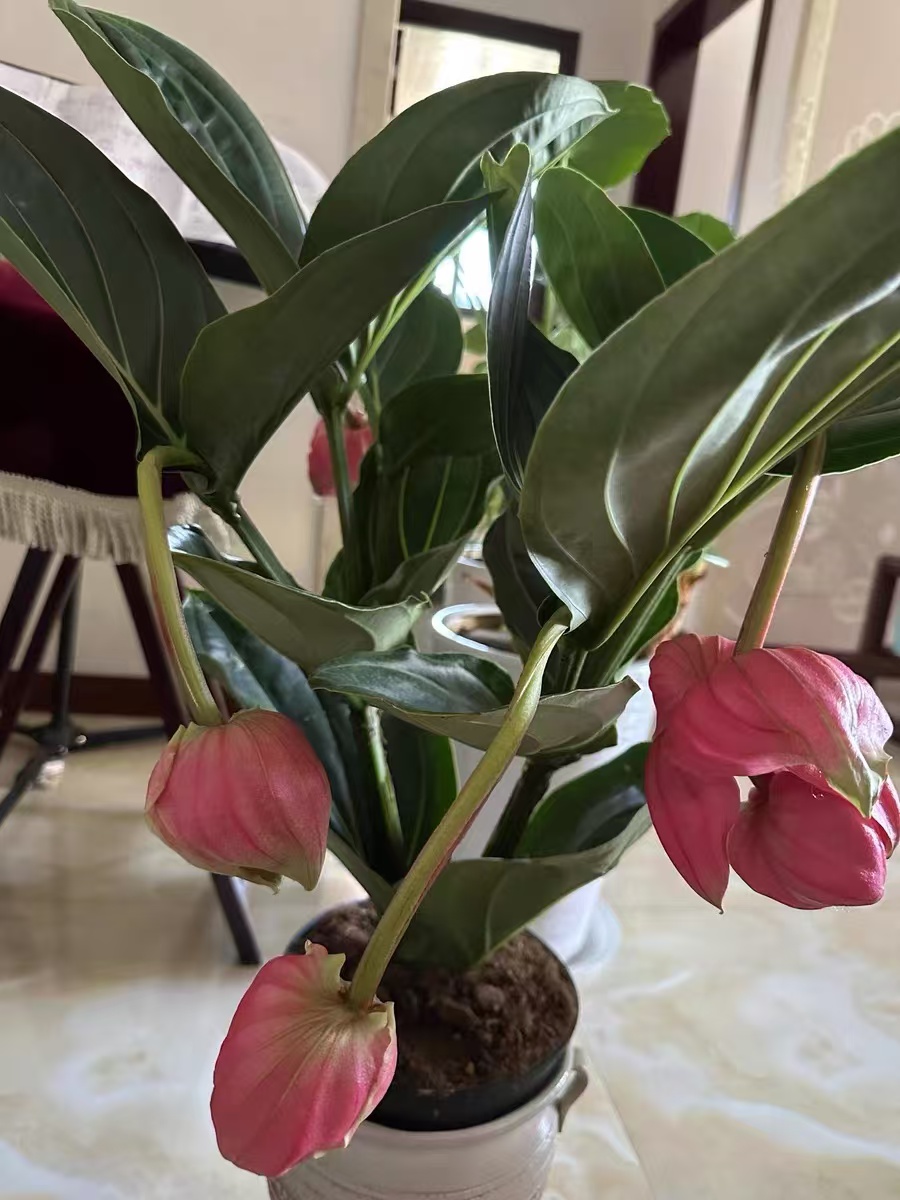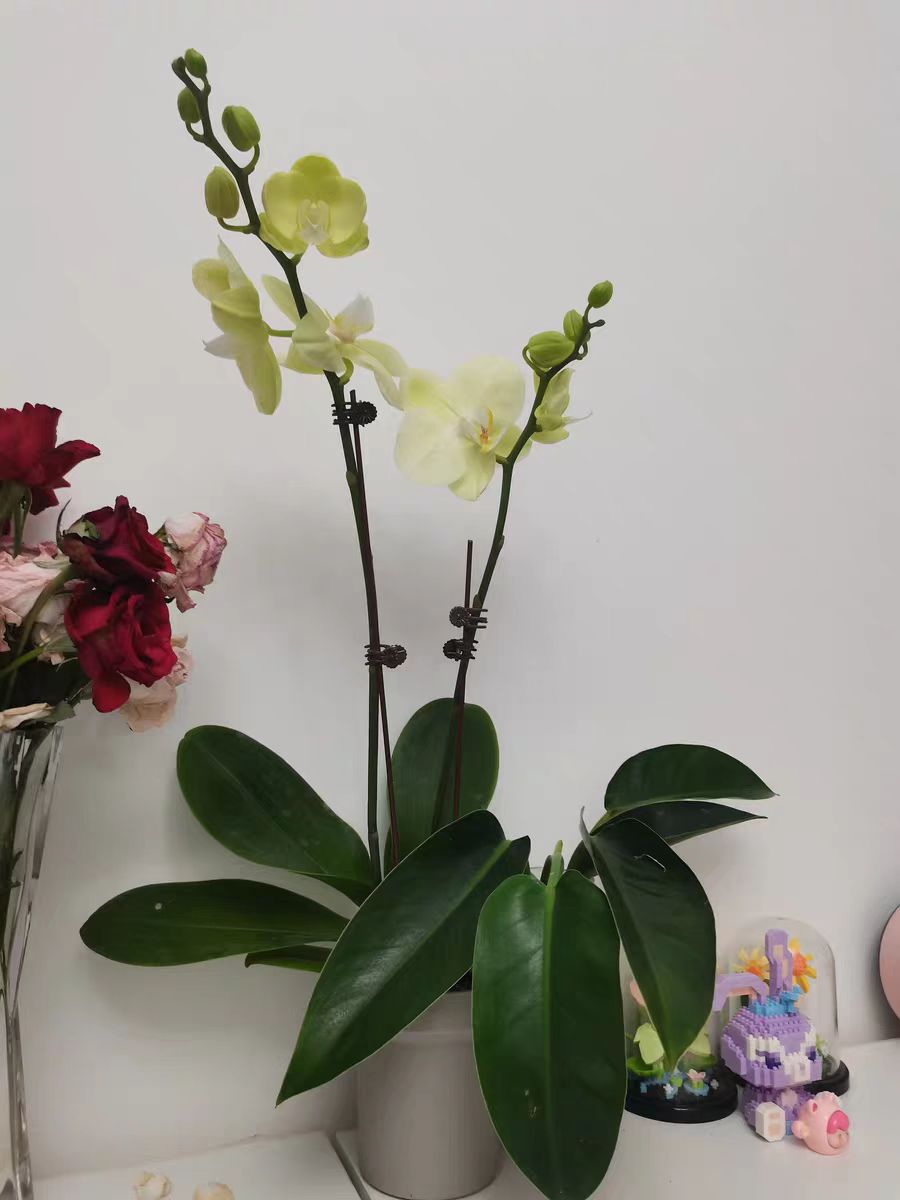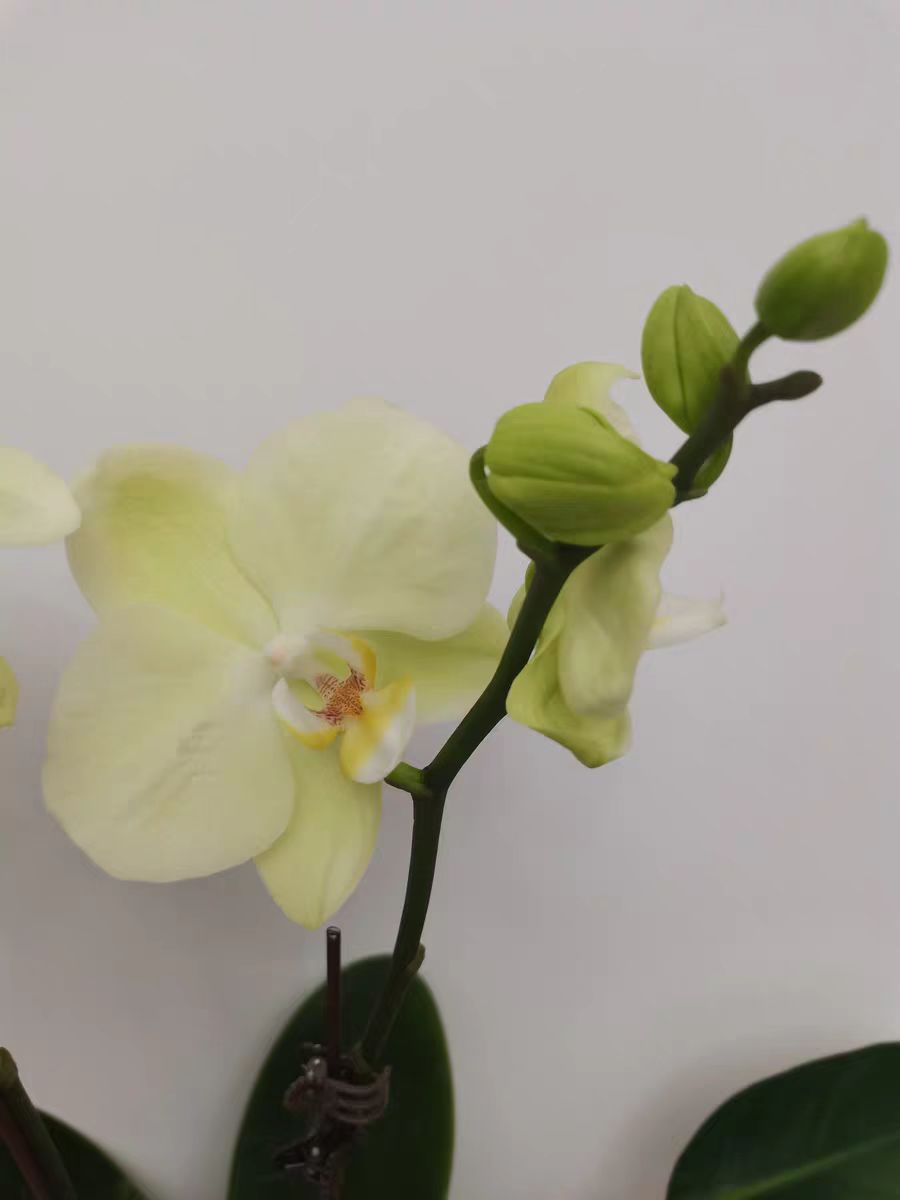Medinilla magnifica, scientifically known as Pink Grape Flower, is a perennial evergreen shrub belonging to the genus Averrhoa of the Melastomataceae family. It is native to the tropical regions of Southeast Asia and is also distributed in southern Yunnan and Hainan of China. There are more than 300 varieties of Medinilla magnifica, and it is currently relatively rare as an ornamental plant in China.
Medinilla magnifica prefers a bright, scattered light environment. However, being exposed to strong sunlight for a long time, especially the midday sun in summer, will cause the leaves to get sunburned and the edges to become scorched. The solution to this problem is to move the Medinilla magnifica to a place with sufficient scattered light and avoid direct sunlight. In summer, sunshade nets or curtains can be used to block part of the sunlight, allowing the Medinilla magnifica to receive the soft light in the morning or evening.
Medinilla magnifica likes a warm and humid environment but is not tolerant of high temperatures. When the ambient temperature exceeds 35°C for a long time, it is easy to burn the leaves; also, if the air humidity is too low, the leaves will lose water too quickly and the edges will become scorched. Therefore, during the high temperature in summer, it is necessary to pay attention to controlling the indoor temperature, maintaining ventilation, and often spraying water on the leaf surfaces to increase the humidity and lower the temperature. Using a humidifier or regularly placing water trays around the flowerpots can also effectively increase the air humidity.
Both overwatering and underwatering can cause the edges of the leaves of Medinilla magnifica to become scorched. The watering principle of "watering when the soil is dry and stopping when it is wet" should be followed, that is, watering should be done after the soil surface is slightly dry to avoid the potting soil being too wet or too dry for a long time. Ensure that the flowerpot has good drainage to avoid waterlogging. In addition, during the high-temperature and dry season, the watering frequency should be increased to keep the soil moist, and the leaf surfaces and the surrounding environment should be sprayed regularly to increase the humidity.
Overfertilizing or using fertilizers with too high a concentration will burn the leaves and cause the edges to become scorched. Fertilization should be stopped, and the soil should be rinsed with clean water to dilute the fertilizers. When fertilizing later, the principle of "applying thin fertilizers frequently" should be followed. The amount of each fertilization should not be too much and the concentration should be moderate. During the vigorous growth period of Medinilla magnifica, a balanced fertilizer of nitrogen, phosphorus, and potassium can be applied every half a month; after the flowering period, potassium dihydrogen phosphate should be supplemented, and the roots should be irrigated once every ten days or so after being diluted 1000 times to promote re-flowering. Fertilization should be stopped when the temperature is low in winter to prevent fertilizer damage.
Medinilla magnifica may be attacked by pests such as aphids and red spiders. These pests will suck the sap of the leaves and cause the edges of the leaves to become scorched. The backs of the leaves and the stems should be regularly inspected for the presence of pests. If there are pests, appropriate insecticides can be used for prevention and control. Maintaining a good ventilation environment is also an important measure to reduce the occurrence of pests and diseases.
Cultivation Methods and Precautions for Medinilla magnifica
Medinilla magnifica is suitable for being planted in loose, breathable, acidic nutrient soil. The soil can be a mixture of peat soil, leaf mold soil, and perlite (in a ratio of 1:1:1) or a general-purpose nutrient soil. The flowerpot should not be too large and should match the size of the plant, and a pot with many air holes, such as an earthenware pot or a root control pot, should be chosen.
Medinilla magnifica prefers a bright, scattered light environment and is not tolerant of direct strong light. It can be appropriately exposed to the sun in spring and autumn, but it needs to be shaded in summer to avoid leaf sunburn. The suitable growth temperature is from 18 to 28°C, and it can safely overwinter if the temperature in winter is not lower than 10°C. Ventilation and temperature reduction are required during the high temperature in summer to avoid a stuffy environment.
Medinilla magnifica likes moisture but is afraid of waterlogging. When the potting soil is half dry, it should be watered in time to keep the soil moist. During the high-temperature and dry season in summer, the watering frequency should be increased and the leaf surfaces and the surrounding environment should be sprayed regularly to increase the humidity. Using a humidifier or regularly placing water trays around the flowerpots can also effectively increase the air humidity.
Medinilla magnifica needs to be fertilized regularly during the vigorous growth period to supplement nutrients. When fertilizing, the principle of "applying thin fertilizers frequently" should be followed to avoid fertilizer damage caused by too high a concentration. After the flowering period, the withered flowers should be pruned in time to avoid nutrient consumption and promote the formation of new flower buds. At the same time, the branches should be pruned regularly to keep the plant shape beautiful.
Medinilla magnifica needs a good ventilation environment to avoid the occurrence of pests and diseases. Special attention should be paid to keeping warm in winter to avoid freezing damage caused by the temperature being lower than 10°C. At the same time, the watering frequency should be reduced to prevent waterlogging and root rot.
Through reasonable light management, temperature and humidity control, watering and fertilizing management, and pest and disease control measures, the problem of the edges of the leaves of Medinilla magnifica being scorched and withered can be effectively solved and the healthy growth of the plant can be promoted. At the same time, following the correct cultivation methods and precautions can also make Medinilla magnifica more beautifully add vitality and energy to the home environment.
What should be done if the edges of the leaves of Medinilla magnifica are scorched and withered?

Share with
Tagged in :




Leave a Reply